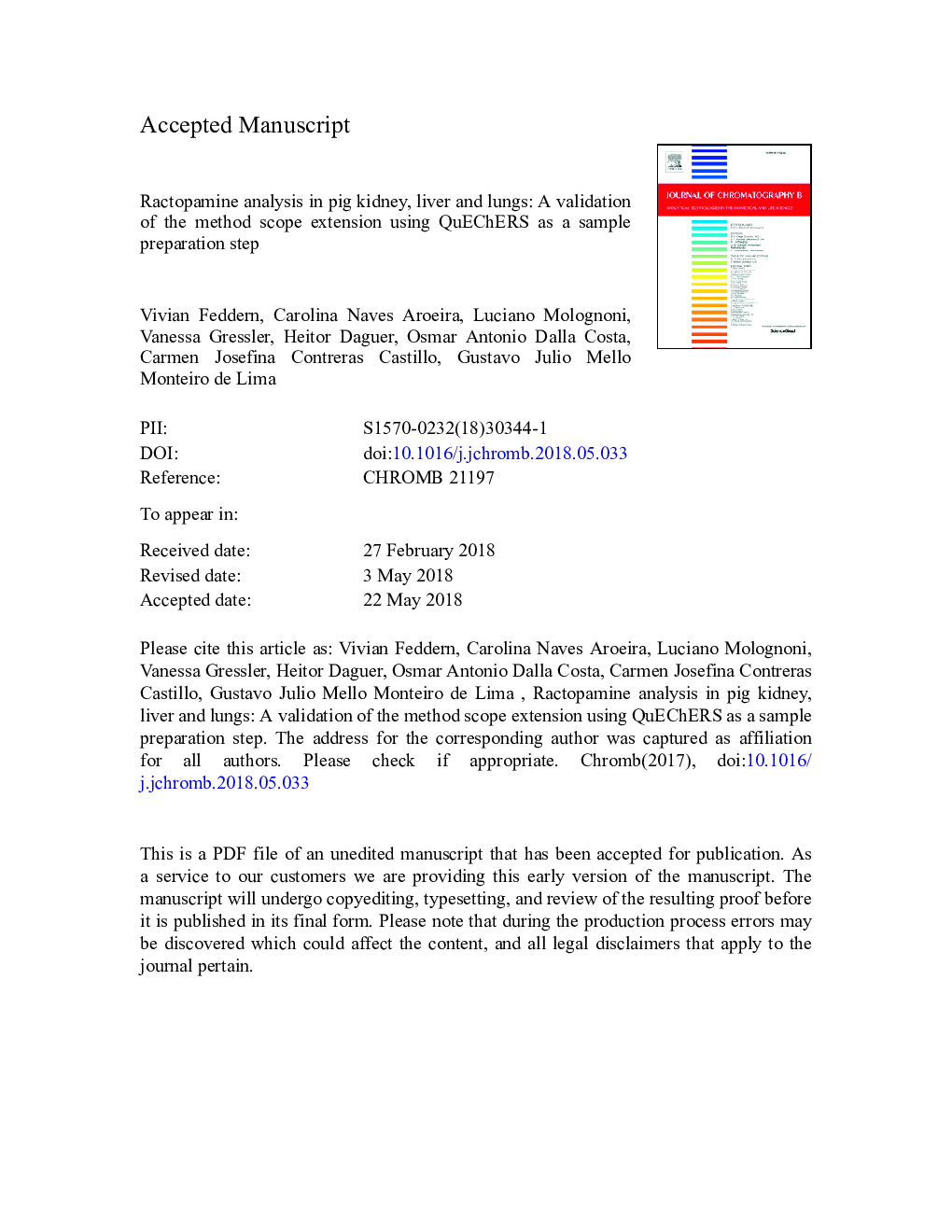| Article ID | Journal | Published Year | Pages | File Type |
|---|---|---|---|---|
| 7614905 | Journal of Chromatography B | 2018 | 40 Pages |
Abstract
Ractopamine has been allowed by some countries as a repartitioning additive in pig diet, since it promotes protein synthesis and fat lipolysis. Most regulatory agencies only propose the ractopamine assessment in meat, kidney, liver and fat. Aiming at contributing to the scarcity data regarding this analyte in pig lungs, we extended the scope of a LC-MS method to evaluate pig offals. Homogenized tissue samples were extracted by a QuEChERS procedure; following by clean up steps and further tandem mass spectrometry determination. Method performance was evaluated through specificity, recovery, linearity, reproducibility, repeatability, decision limit (CCα), and detection capability (CCβ), in accordance to the Commission Decision 2002/657/EC. Regression coefficients (R2) between 0.994 and 0.999 were achieved for kidney, liver and lungs. Recoveries ranged from 92.0 to 127%. CCα and CCβ values ranged from 3.65 to 4.86â¯Î¼gâ¯kgâ1, and from 6.27 to 7.21â¯Î¼gâ¯kgâ1, respectively. These values were under the maximum residue limits suggested by Codex Alimentarius, which are 90 and 40â¯Î¼gâ¯kgâ1 for kidney and liver, respectively. When applied to real samples up to 22.5, 92 and 1003â¯Î¼gâ¯kgâ1 of ractopamine residues were detected in pig liver, kidney and lungs, respectively. The results allowed concluding that the proposed analytical method is capable to detect ractopamine residues in all evaluated matrices. Therefore, it can be successfully applied and used as a routine method in laboratories of residue analysis.
Related Topics
Physical Sciences and Engineering
Chemistry
Analytical Chemistry
Authors
Vivian Feddern, Carolina Naves Aroeira, Luciano Molognoni, Vanessa Gressler, Heitor Daguer, Osmar Antonio Dalla Costa, Carmen Josefina Contreras Castillo, Gustavo Julio Mello Monteiro de Lima,
